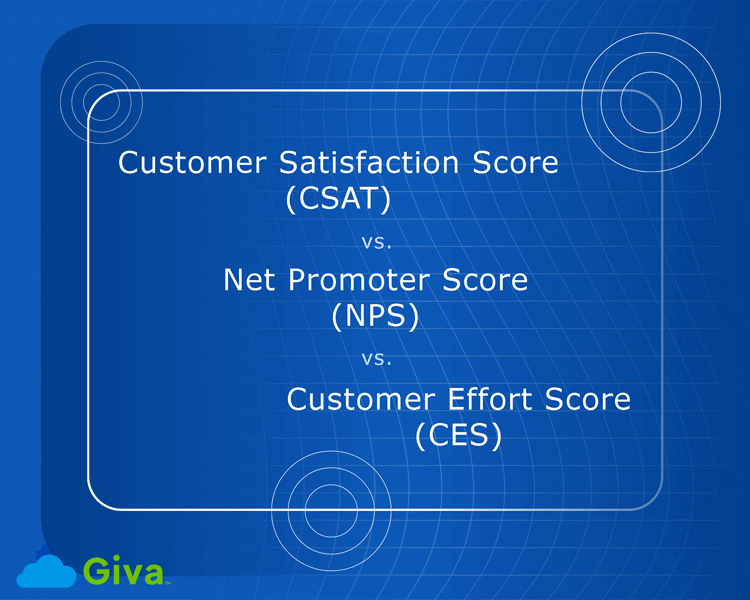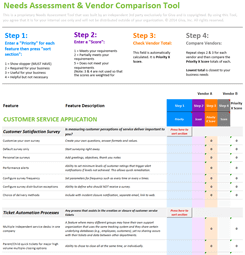Contact Center Transformation Fully Examined: How to Build the Future of Customer Engagement
The customer experience environment is changing. Customers now expect faster, more personal service across every digital channel. Regrettably, many companies still use outdated systems that slow their contact centers down.
The strategic response is contact center transformation. It isn't a tech upgrade, it's a complete evolution in customer engagement. In customer service, this transformation relies on AI, automation, and cloud systems. These tools help teams respond faster and with more concrete answers.
This guide is tailored for executives, operations leaders, and IT decision-makers. Inside, you'll find clear insights to help you lead successful transformation initiatives.

What Is Contact Center Transformation?
Contact center transformation is the process of modernizing how a company communicates with and supports its customers. It goes beyond just adding new software or using the latest technologies to improving how teams, technology, and customers work together.
In simple terms, transformation brings everything into one connected system. It uses AI, automation, and cloud tools to make service faster, easier, and more personal. Instead of handling each call or message separately, a modern contact center connects every interaction into one smooth, consistent experience.
An example might be, if a customer starts a chat on your website, follows up later by email, and then calls to finish the conversation, the agent already sees the full history. The customer doesn't need to repeat details, as every channel works together in one seamless workflow.
Why Contact Center Transformation Can No Longer Wait
The window for incremental improvement has closed. The post-pandemic era and the surge in AI have reshaped customer expectations and digital behavior. If customers were demanding before, they're even more so now. They expect helpful, proactive service every time they reach out. Customer interactions must be quick, personalized, and based on real context:
-
The High Cost of Standing Still
This reality affects businesses of every size. Transformation can be a major undertaking, but the cost of standing still is far greater. When customers wait too long, have to follow up, or feel their issues aren't taken seriously, they move on. They leave negative reviews, spread bad word of mouth, and lower your satisfaction scores. In the end, they stop doing business with you.
-
Outdated Systems Hold Businesses Back
The damage doesn't stop there. Inside the organization, outdated systems and manual work drive up costs and slow progress. Meanwhile, competitors that embrace automation and AI gain a real competitive edge.
-
The Contact Center Is Already Transforming
Inside the contact center, the shift is already happening. Hybrid work and omnichannel service have changed how teams operate day to day. Leaders now manage teams across time zones and channels to keep performance up and the experience consistent. AI and automation aren't optional anymore, they're must-haves for speed, accuracy, and scale.
-
Transformation Is a Continuous Journey
The best organizations know transformation never ends. They modernize processes, use data to make smarter decisions, and move faster than competitors still stuck in old systems. Traditional models just can't keep up.
From Call Centers to Contact Centers: Understanding the Evolution
Excluding AI capabilities, call centers have evolved over the years. Traditional call centers were focused on phone service. The goal was to move from one customer to the next as quickly as possible. Volume and First Contact Resolution (FCR) were always the main goals. Agents worked from one centralized location with a phone and a desktop computer.
How times have changed!
In today's digital, omnichannel world, that model no longer works. Phone and even email service are now parts of a much larger operation:
- Traditional call centers react to problems.
- Modern contact centers anticipate them and focus on a connected, customer-first experience.
-
The Shift from Call Center to Contact Center
So, what drove the shift from call center to contact center? The change began with digital transformation initiatives. These efforts opened new channels and introduced automation. But the biggest driver is customer demand. Today's customers expect support anytime, on any platform.
-
From Transactions to Total Experiences
Modern contact centers operate as connected, data-driven systems rather than isolated service departments. They've moved beyond answering calls to managing complete customer experiences.
Compared to traditional setups, here's what today's contact centers achieve:
-
Unified Communication Across All Channels
Customers can move between chat, social, email, and phone without repeating themselves.
-
Cloud-Based Infrastructure (CCaaS)
Flexible, scalable platforms replace on-premise systems, making updates and integrations faster and easier.
-
AI-Driven Automation and Analytics
Machine learning tools help agents in real time. They uncover insights from conversations and predict customer needs.
-
Personalized and Proactive Engagement
Instead of waiting for problems, agents can anticipate them through context-rich data.
-
Customer Insight as a Growth Driver
Every interaction generates intelligence that informs strategy, product development, and future experience.
-
This evolution matters. It marks the shift from transactional service to strategic engagement. Call centers represent the past: reactive, limited, and confined to a single channel. Contact centers represent the future: data-driven, customer-centric, adaptable, and scalable.
The Current State of Contact Centers: Where the Gaps Lie and Challenges to Transformation
With ideas endless and competition growing, many companies are finally turning talk into action. That said, many are also getting stuck mid-journey. Despite new technology, service gaps remain. It's a frustrating point for executives, IT, and CX leaders when vision stalls before execution.
Even after years of investment, many contact centers still operate in fragmented ecosystems. Systems don't talk to each other, and data remains siloed. All those shiny new tools aren't worth much when they don't work together.
-
Common Technology Gaps
-
Legacy Systems That Can't Connect with Modern Platforms
Many legacy CRMs and phone systems can't link to chat or social tools, so customer information stays stuck in different places.
-
Disconnected Reporting Tools That Limit Visibility
Each channel tracks its own metrics, so leaders waste time combining reports and making decisions takes longer.
-
Lack of Unified Dashboards for Performance Tracking
Managers lack a single, real-time view of what's happening, from agent performance to customer mood, making it easy for small issues to grow fast.
-
Manual Workarounds That Waste Time and Frustrate Agents
Employees still move between systems to complete a task, which slows handling times and increases mistakes.
-
-
Common Challenges to Transformation
Moreover, many organizations struggle to modernize because of all-too-familiar hurdles.
-
Siloed Systems
Legacy tools that don't integrate prevent teams from seeing the full customer picture.
-
Resistance to Change
Even with the right tools, adoption stalls when agents aren't engaged or trained effectively.
-
Lack of Training
Technology delivers little value if teams lack the confidence or knowledge to use it.
-
Unclear Key Performance Indicators (KPIs)
Without defined goals and measurable outcomes, progress can't be tracked or celebrated.
-
According to KPMG's 2024 Global Tech Report, 57% of organizations still face weekly disruptions because of flaws in their core IT systems. It's a clear sign that integration challenges go far beyond the contact center.
Many centers are still using processes built for a voice-first world. Agents juggle systems, handoffs are slow, and success is still measured by volume rather than experience. These inefficiencies not only hurt performance but also morale.
The best organizations keep transformation going. They use technology to help their teams, not replace them, and that's what makes change last.
The Future Vision: A Transformed, Data-Driven Contact Center
The modern contact center isn't just a service department. It's a strategic hub for insights, building and continuing customer trust.
The future belongs to organizations that see every interaction as a data point to build on.
In a transformed contact center, data guides every decision:
- AI and automation handle routine work, freeing agents to focus on high-value interactions.
Beyond simple chatbots, they enable intelligent routing, real-time coaching, predictive analytics, and sentiment detection. These capabilities help agents focus on the more human side of empathy and expertise, which drive customer loyalty.
Further, leaders can spot trends early, forecast demand, and act before issues grow. In this context, data-driven implies a contact center that learns, adapts, and improves every day. Predictive AI can identify upcoming surges in demand and potential service gaps before they occur. Over time, these systems learn and adapt, improving both agent performance and customer outcomes.
- Cloud-based systems unify communication channels, dashboards, and analytics. Predictive insights show what matters most: what customers need, how they feel, and the quality of their experience. Every metric tells a story.
Technology, though, is only part of the story. The best organizations use automation to support people, not replace them. They invest in training, collaboration, and tools that make agents more capable and confident. Balancing data and empathy will define the next generation of customer service.
Giva can help you build this foundation.
The Giva Customer Service solution offers:
- Custom dashboards, making it easy to track key metrics like first-call resolution, ticket volume, and SLA compliance in real time.
- Rapid-deployment cloud software with intuitive setup and minimal training required.
- Functionality to manage tickets and automate workflows. They route requests, resolve repeat issues, and free agents to focus on customers who need more help.
- Robust analytics to give leaders real-time dashboards and insights so they can spot problems early and act fast.
But that's not all! Learn more, get a demo and start a free trial today.
5 Core Pillars of Contact Center Transformation
-
AI-Powered Insights and Automation
As we mentioned earlier, AI is here to support agents and leaders, not replace them. The difference between winners and losers will come down to how effectively they use these tools. Examples include intelligent routing, sentiment analysis, real-time coaching, and chatbots for simple requests. Together, these capabilities create a robust, always-on customer service operation.
Predictive analytics go a step further. They help teams anticipate demand surges, service spikes, and early signs of customer frustration.
Key takeaway: AI speeds up decision-making. It frees agents to spend more time understanding and solving customer problems. For customers, it means a more complete experience from search to service.
-
CCaaS and Cloud Migration
Remember the cloud? It was one of the trendiest tech topics before AI took center stage, and it's still vital today. In fact, cloud migration has become a baseline expectation for modern organizations. Storing data anywhere else is risky and limits flexibility.
Enter CCaaS (Contact Center as a Service). This model moves operations from on-premise systems to the cloud. Key benefits include quick setup and easy scaling. It also connects with CRMs and analytics tools, keeps data secure, and meets compliance standards. Cloud infrastructure also reduces maintenance costs and downtime, while updates occur automatically. As remote and hybrid work become standard, cloud systems enable teams to work anywhere and stay secure and reliable.
Key takeaway: Moving to CCaaS helps contact centers adapt faster to customer needs and new technology.
-
Omnichannel and Unified Customer Journeys
Customers expect to start on one channel, like chat or email, and finish on another without having to repeat their story. They want to pick up where they left off, no matter the time or channel. Unified journey management gives teams one clear view of the customer across every channel. For example, an inquiry started in chat can escalate to a call with full context intact.
Key takeaway: Omnichannel transformation turns fragmented touchpoints into one connected, consistent experience.
-
Data Strategy and Analytics
Traditional call centers focused on clearing as many calls as possible. Modern contact centers take a quality-over-quantity approach, all driven by data. Data is the backbone of every transformation effort. Without it, decisions are reactive instead of proactive.
Today, leading centers centralize data from every channel into one platform. Analytics then identify trends, root causes, and opportunities for improvement in real time. For leaders, dashboards show key metrics like customer sentiment, handle time, and agent workload.
Key takeaway: A smart data approach helps teams learn from every customer interaction and use those insights to improve.
-
Workforce Empowerment and Training Transformation
Growth always comes with challenges, and transformation is no different. New systems, tools, and processes take time to learn. But technology only succeeds when people are confident to use it. Modern training programs combine e-learning, gamification, and AI-powered coaching for continuous development. These methods help agents perform better, stay longer, and deliver more personalized service. Workforce management tools also balance workloads and improve scheduling flexibility.
Key takeaway: Transformation succeeds when agents have the necessary support, training, and confidence to work with new technology.
These pillars form the base of a modern contact center. They bring people, technology, and data together in one system that adapts and grows with the business.
How to Implement a Contact Center Transformation Roadmap
Implementation is where most transformation efforts stall. Not because of vision, but because of planning and execution gaps. That's why a roadmap is essential. It turns ideas into measurable steps.
A good roadmap mixes big goals with quick wins so the team keeps its energy and momentum. Remember, transformation isn't one big project, it's a phased journey with checkpoints and pivots.
Ready to get started? Follow these steps to a successful transformation strategy at your business:
-
Assess the Current State
You can't look to the future without understanding where you are now. Follow these steps to complete your assessment:
- Start with a full audit of existing systems, workflows, and customer touchpoints.
- Look for pain points. Outdated systems, data silos, poor connections between tools, and uneven service metrics.
- Talk with frontline agents and managers. They live the experience every day and know where the friction is.
- Benchmark against industry standards. Look at metrics like CSAT, First-Contact Resolution, and Average Handle Time.
Deliverable: a Current State Map showing how people, processes, and platforms connect (or don't).
-
Define Clear Goals and KPIs
Now that you know where things stand, determine what you want them to look like in the future. Tie goals to measurable outcomes, such as reducing handle time by 20%, improving NPS by 10 points, or cutting manual ticket volume.
Be sure your KPIs support key business goals like keeping customers, cutting costs, and keeping teams engaged.
Deliverable: A Success Framework that defines what improvement looks like and how it will be measured.
-
Build a Cross-Functional Transformation Team
Transformation takes a team, the whole team. Most organizations work cross-functionally to sell products or support customers; the same should apply here.
Bring together leaders from operations, IT, customer experience, and HR to collaborate. Assign a clear project owner or transformation lead to maintain accountability. Meet regularly, share ideas, and set deadlines. This is where transformation moves from planning to action.
Deliverable: A Transformation Governance Model defining roles, responsibilities, and escalation paths.
-
Prioritize Technology Investments
Once your team aligns on goals, it's time to make strategic moves. Choose scalable, cloud-based solutions that integrate with existing systems. Focus on technologies that deliver measurable ROI. This could be AI-powered analytics, CCaaS and automation tools.
Avoid "tech for tech's sake." Every investment should support a business objective. Pilot new solutions in controlled environments before a full rollout.
Deliverable: a phased Technology Implementation Plan with timelines, costs, and risk-mitigation steps.
-
Plan for Change Management and Training
Transformation fails when people are left behind. To prevent that, make training a continuous process, not a one-time event.
- Communicate why changes are happening and how they improve daily work.
- Combine e-learning, coaching, and on-the-job reinforcement.
- Recognize early adopters and turn them into internal champions.
Deliverable: A Change Enablement Plan with communication milestones and learning resources.
-
Track, Measure, and Adjust
Your transformation team has turned ideas into execution. Now it's time to ensure things are working as expected.
-
Use dashboards and analytics to monitor KPIs in real time. Confirm you're seeing positive movement toward your targets. Key indicators include:
- Customer Effort Score (CES): Measures how easy it is for customers to resolve issues.
- Customer Satisfaction (CSAT) and Net Promoter Score (NPS): Reveal how service impacts loyalty.
- First Call Resolution (FCR): Indicates how effectively agents solve problems the first time.
- Average Handling Time (AHT): Tracks efficiency without sacrificing quality.
- Employee Engagement: Transformation fails if agents lose motivation or clarity.
- Hold monthly or quarterly review sessions to evaluate progress and remove roadblocks.
- Celebrate quick wins to maintain morale and momentum.
- Adapt as customer needs or technologies evolve. Transformation is continuous!
Deliverable: a Continuous Improvement Loop built into your daily operations.
Key Benefits of Contact Center Transformation
-
Lower Costs and Higher Efficiency
Automation and AI reduce manual work and eliminate time lost switching between systems, whereas cloud infrastructure cuts hardware costs and downtime. Fewer repetitive tasks mean agents can handle more complex, higher-value conversations.
-
Stronger Customer Experience
Omnichannel platforms connect every touchpoint including chat, email, phone, and social. This means customers get consistent, fast, and personal service. AI tools help agents predict needs and solve problems before they escalate.
-
Empowered and Engaged Workforce
With access to better data and easier tools, agents can focus on helping people instead of wrestling with software. Continuous training and AI-driven coaching build confidence, improve performance, and reduce turnover.
-
Smarter Decision-Making
Leaders gain real-time insight into what's working and what's not. Dashboards pull together customer feedback, agent performance, and results in one place.
-
Scalable and Agile Operations
Cloud-based systems make it easy to expand or pivot as needs change. Whether adding new channels or supporting remote teams, flexibility becomes built-in.
Did you know? Gartner predicts that by 2029, agentic AI will handle 80% of common service issues on its own, cutting operational costs by about 30%.
Leading the Future Through Contact Center Transformation
Contact center transformation isn't only about technology. When people, data, and AI work together, contact centers learn and improve with every customer interaction. The future belongs to teams that act now. Start with a clear roadmap, empower your people, and measure progress along the way.
Looking to get started? Giva helps teams do this through cloud-based customer service software that's fast to deploy and easy to use. It includes
- Real-time reporting
- Customizable dashboards
- AI Copilots for streamlined service
To learn more, get a demo to see Giva's solutions in action, or start your own free, 30-day trial today!
-
Use dashboards and analytics to monitor KPIs in real time. Confirm you're seeing positive movement toward your targets. Key indicators include:





